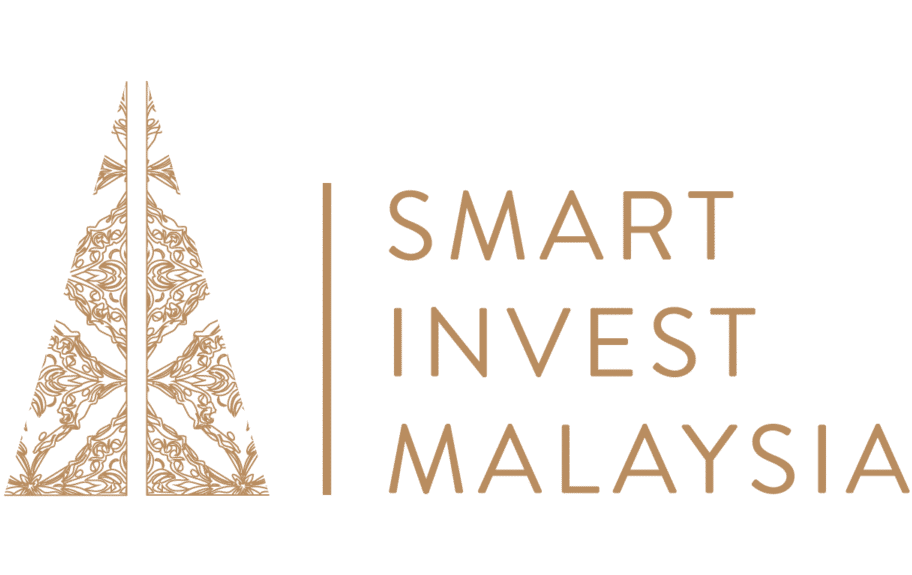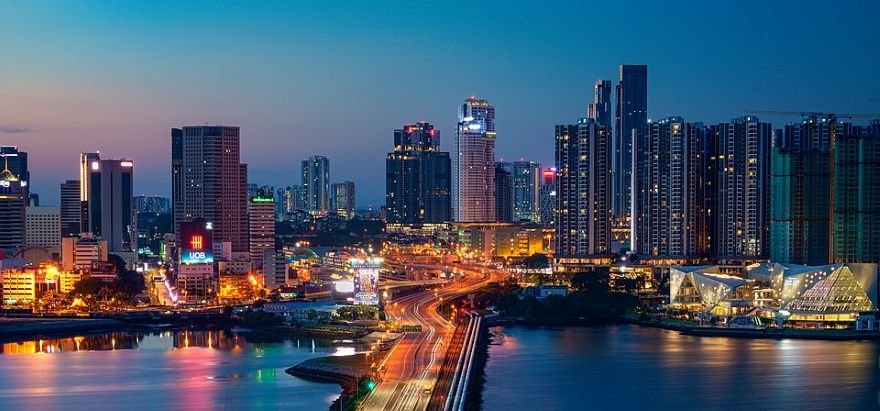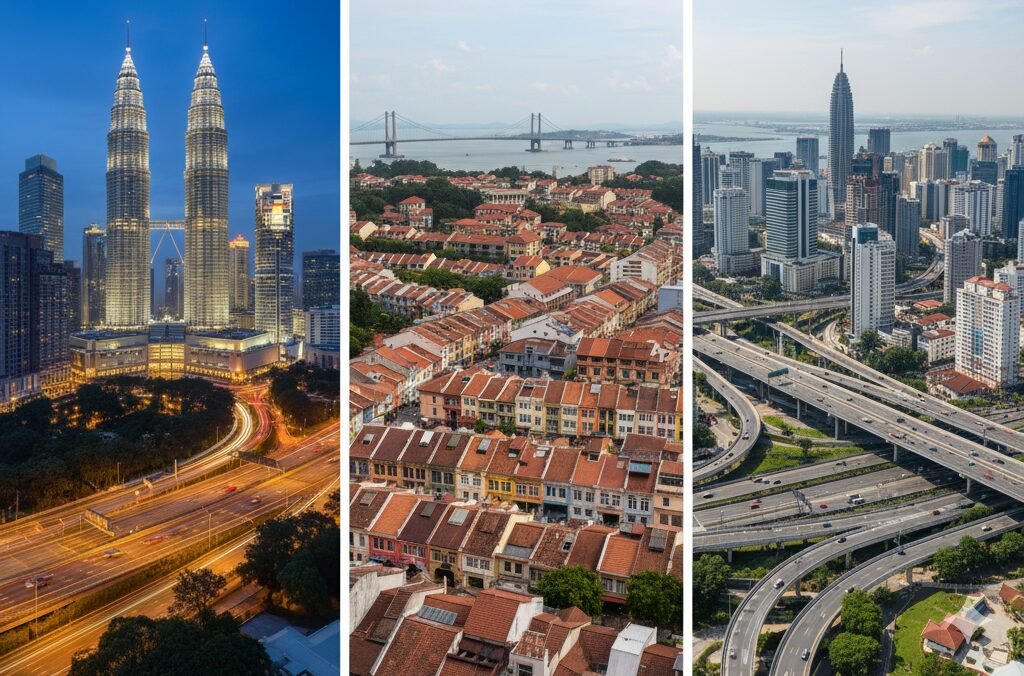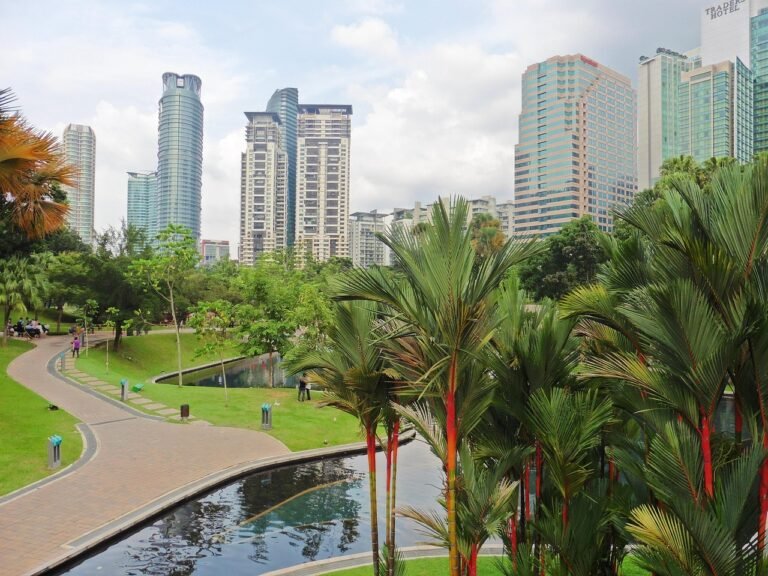JS-SEZ: How the Johor-Singapore Special Economic Zone Challenges Asian Giants
In January 2025, Southeast Asia witnessed the birth of a revolutionary special economic zone: the JS-SEZ (Johor-Singapore Special Economic Zone). Officially signed on January 7, 2025, during the 11th Malaysia-Singapore Leaders’ Retreat, this historic collaboration between Malaysia and Singapore covers 3,571 square kilometers – four times the size of Singapore – and aims to create 20,000 skilled jobs within the next five years.
The JS-SEZ is not merely another trade agreement. It represents the creation of an integrated economic corridor that combines Singapore’s financial and technological expertise with Johor’s vast land resources and competitive workforce. This unique synergy allows companies to simultaneously benefit from both economies’ advantages, creating a value proposition that traditional hubs like Hong Kong or Shenzhen struggle to match.
With exceptional tax incentives – notably a 5% corporate tax rate for 15 years for priority sectors – and revolutionary customs facilitations including QR code passport-free crossings, the JS-SEZ redefines regional economic attractiveness standards. Early results are telling: RM 27.4 billion in investments recorded in the first quarter of 2025 alone.
What is the Johor-Singapore Special Economic Zone?
The JS-SEZ represents Southeast Asia’s first cross-border special economic zone. This strategic initiative aims to deepen economic integration between two of the region’s most dynamic economies, creating a perfectly coordinated commercial and industrial ecosystem.
The agreement, resulting from over a year of intensive negotiations, builds upon already solid trade relations between the two countries. In 2023, Malaysia was Singapore’s third-largest trading partner, while Singapore represented Malaysia’s second-largest trading partner, with bilateral trade reaching USD 79.58 billion.
The 9 Flagship Zones and Their Specializations
The JS-SEZ is structured around nine strategically positioned flagship zones:
• Iskandar Development Region: Main hub for financial services and technology • Forest City Special Financial Zone: Next-generation offshore financial center • Pengerang Integrated Petroleum Complex (PIPC): Energy and petrochemical hub • Sedenak and Kulai Industrial Zones: Advanced manufacturing and data centers • Pasir Gudang Logistics Corridor: Regional logistics platform • Renewable Energy Zones: Solar and green hydrogen projects • Technology Innovation Centers: R&D and tech startups • Integrated Tourism Zones: Business tourism development • Agrifood Hubs: Food security and processing
The 11 Targeted Priority Sectors
The JS-SEZ strategy targets eleven carefully selected priority economic sectors to maximize synergies between the two countries:
• Advanced Manufacturing: Electronics, semiconductors, medical devices • Logistics and Supply Chain: Regional distribution centers • Financial Services: Regional P&L centers, treasury operations • Digital Economy: AI, quantum computing, blockchain • Integrated Tourism: High-end business and leisure tourism • Food Security: Precision agriculture and processing • Health and Life Sciences: Medical research and biotechnology • Energy and Green Economy: Renewable energy, green hydrogen • Business Services: Shared service centers • Education: International universities and technical training • Aerospace: Manufacturing and aircraft maintenance
A Revolutionary Tax Incentive Package
The JS-SEZ distinguishes itself through an unprecedented tax incentive package in Southeast Asia. Effective since January 1, 2025, this framework positions Johor as one of the world’s most attractive investment destinations.
The Malaysian government designed these incentives within the New Investment Incentive Framework (NIIF) announced in Budget 2025, demonstrating the highest-level political commitment to this project’s success.
Preferential 5% Tax Rate for 15 Years
The flagship incentive is a corporate tax rate of only 5% for 15 years for companies investing in qualifying activities. This dramatic reduction – compared to Malaysia’s standard 24% rate – applies to the following sectors:
• Artificial Intelligence and Quantum Computing: AI solutions development and quantum supply chains • Medical Devices: Manufacturing and R&D of advanced medical equipment • Aerospace Manufacturing: Production and assembly of aeronautical components • Global Service Hubs: Regional P&L centers and treasury operations • Renewable Energy: Solar, wind, and green hydrogen projects • Data Centers: Cloud and edge computing infrastructure
This incentive comes with Investment Tax Allowance (ITA) up to 100% on qualifying equipment expenditure, allowing companies to fully recover their initial investments.
Benefits for Skilled Workers (15% Tax Rate)
To attract top international talent, the JS-SEZ offers a personal tax rate of 15% for 10 years for qualified workers. This measure specifically targets:
• Specialized Engineers in AI, robotics, and advanced technologies • Data Scientists and quantum computing experts • Finance Professionals in regional centers • Researchers in life sciences and biotechnology • Renewable Energy Experts and clean technology specialists
Simultaneously, JS-SEZ companies can offer premium salaries with a minimum of RM 3,500 for local graduates and RM 5,000 for degree holders, creating a virtuous circle of talent attraction.
Unprecedented Connectivity Between Two Economies
The JS-SEZ revolutionizes connectivity between Johor and Singapore through technological and infrastructure innovations that progressively eliminate traditional barriers to cross-border trade.
This approach transforms one of the world’s busiest borders – with more than 300,000 daily crossings – into a fluid and efficient economic corridor. Investments in physical and digital connectivity create a unique business environment where companies can operate seamlessly across both jurisdictions.
QR Code Crossing and Customs Simplification
The most visible innovation is the introduction of the QR code passport-free crossing system, already operational since June 2024 for Malaysian citizens. This revolutionary technology enables:
• 75% reduction in waiting times at checkpoints • Complete digitalization of immigration processes • Dedicated lanes for JS-SEZ company employees • Special passes for executives facilitating business travel • Customs system integration to accelerate cargo passage
The system will progressively extend to international visitors and tourists, creating an almost total free-movement zone. Companies also benefit from digitized customs procedures with advance clearance and real-time cargo tracking.
The RTS Link Project and Transport Infrastructure
The Johor Bahru-Singapore Rapid Transit System (RTS) Link forms the backbone of future connectivity. This high-frequency rail link, scheduled to open commercially in late 2026, will transport 10,000 passengers per hour in each direction.
Infrastructure investments include:
• North-South Highway widening to double traffic capacity • New freight terminals with automated handling technologies • Power grid upgrades to meet data center demand • ASEAN-level energy exchange agreements to secure supply • Cross-border fiber optic networks to create a “digital corridor”
These infrastructures create an integrated physical and digital ecosystem enabling JS-SEZ companies to optimize operations across both countries.
Why the JS-SEZ Threatens Traditional Asian Hubs
The JS-SEZ represents a major disruption in the Asian economic landscape. Its unique value proposition challenges traditional hub dominance by offering competitive advantages no other economic center can replicate.
This threat doesn’t stem from simple cost or incentive competition, but from creating a hybrid economic model that combines two complementary economies’ strengths. PwC and JLL analysts consider this approach a “paradigm shift” in regional economic cooperation.
The Perfect Synergy: Singapore’s Expertise + Johor’s Resources
The JS-SEZ’s strength lies in a natural economic complementarity that few other zones can claim:
Singapore’s Contributions: • Global financial hub with access to international capital • Mature technology ecosystem and world-class infrastructure • High-value service expertise and research centers • Maritime and aviation connectivity to global markets • Internationally recognized political and legal stability • Concentration of international talent and top-tier universities
Johor’s Contributions: • Virtually unlimited land availability for large-scale projects • Competitive operational costs (70% lower than Singapore) • Qualified and abundant workforce with targeted training programs • Proximity to natural resources and raw materials • Regulatory flexibility and aggressive tax incentives • Domestic market of 33 million consumers
This synergy allows companies to “design” their regional presence: R&D and headquarters in Singapore, manufacturing and large-scale operations in Johor, with total process integration.
Comparison with Hong Kong, Shenzhen, and Dubai
| Criteria | JS-SEZ | Hong Kong | Shenzhen | Dubai |
|---|---|---|---|---|
| Land Cost | Very competitive | Very high | High | High |
| Multilingual Talent | Excellent | Excellent | Average | Good |
| Financial Connectivity | Integrated hub | Global leader | Emerging | Regional |
| Manufacturing | Very advantageous | Limited | Saturated | Expensive |
| Political Stability | Very stable | Uncertain | Stable | Stable |
| Customs Ease | Revolutionary | Standard | Standard | Advanced |
| Tax Incentives | 5% (15 years) | Standard | Variable | Attractive |
| Sector Diversification | 11 sectors | Finance focus | Tech focus | Diversified |
The JS-SEZ develops unique comparative advantages in each domain, creating a superior overall value proposition. Unlike monolithic hubs, it offers the geographical and regulatory flexibility modern companies require.
Early Results and Investment Prospects
Less than a year after its official signing, the JS-SEZ displays spectacular results validating both governments’ strategy. These early performances already position the zone as one of Asia’s most dynamic economic corridors.
Investment metrics exceed all initial projections, confirming multinational companies’ appetite for this new cross-border cooperation model. The business ecosystem is rapidly structuring around priority sectors, creating integrated industrial clusters.
RM 27.4 Billion in Q1 2025 Investments
The first quarter of 2025 recorded an investment influx of RM 27.4 billion (USD 8 billion), representing an increase of RM 24 billion compared to Q1 2024. This exceptional performance breaks down as follows:
Data Centers: RM 15 billion • DayOne Data Centers: RM 15 billion multi-currency financing including Islamic finance • YTL Power: 500 MW data center in Kulai, Malaysia’s largest powered by renewables • Microsoft Azure, Equinix, Princeton Digital Group: major expansions
Advanced Manufacturing: RM 8 billion • Electronics and semiconductor sector with European and North Asian companies • Medical devices and precision equipment • Aerospace manufacturing with Japanese partners
Financial Services: RM 3.2 billion • OCBC Group: deployment of over RM 11 billion since early 2024 • UOB: new service centers for “China Plus One” strategy • Regional treasury centers for European multinationals
Renewable Energy: RM 1.2 billion • ACWA Power (Saudi Arabia): USD 10 billion investment in green hydrogen • Solar projects and offshore wind farms
The Investment Malaysia Facilitation Centre Johor (IMFC-J) has processed over 400 investor inquiries and identified RM 26.2 billion in potential projects with RM 16.7 billion in confirmed commitments.
Challenges to Overcome and Implementation Timeline
Despite this early success, the JS-SEZ faces structural challenges requiring constant attention:
Infrastructure Challenges: • Insufficient electrical capacity: 30% of 2024 data center projects postponed • Transport congestion during peak hours despite improvements • System harmonization of IT and regulatory frameworks
Talent Challenges: • Skilled workforce shortage in certain technical sectors • Regional competition to attract international experts • Training programs to accelerate via Johor Talent Development Council
Geopolitical Challenges: • US-China trade tensions affecting supply chains • Evolving international regulations on sensitive technologies • Competition from other regional special economic zones
Implementation Timeline 2025-2030:
• 2025: Finalization of Singapore-Malaysia Joint Project Office and full incentive deployment • 2026: Commercial opening of RTS Link and new infrastructure commissioning • 2027: Target of 50 major projects and 15,000 jobs created • 2028: Extension of QR Code system to international visitors • 2030: 100 operational projects and 20,000 skilled jobs
Authorities anticipate a progressive ramp-up with peak investments between 2026 and 2028, coinciding with connectivity infrastructure maturity.
FAQ – Frequently Asked Questions
How can companies obtain JS-SEZ tax incentives? Companies must submit applications to MIDA between 2025 and 2034, with minimum investment requirements varying by sector and establishment of operations in designated flagship zones.
What are the eligibility criteria for the 5% rate? Companies must invest in priority sectors (AI, medical devices, aerospace), meet minimum investment thresholds, and employ a defined percentage of Malaysian citizens.
Does QR Code crossing work for all travelers? Currently available for Malaysian citizens, the system will extend to JS-SEZ company employees then international visitors by 2028.
What’s the difference from Iskandar Malaysia? JS-SEZ encompasses Iskandar Malaysia but adds 8 new zones, specific tax incentives, and cross-border integration with Singapore previously unavailable.
Can companies operate simultaneously in Johor and Singapore? Yes, this is JS-SEZ’s central objective. Companies can establish headquarters in Singapore and manufacturing operations in Johor with total integration.
What’s the impact on work visas? Special passes are granted to JS-SEZ company executives, and facilitated visa programs are being developed for skilled workers in priority sectors.
Does JS-SEZ compete with other zones like Batam? Rather than competition, JS-SEZ aims for regional complementarity. Its specialization in high-tech sectors differs from Batam’s traditional manufacturing positioning.
When will the RTS rail link be operational? The RTS Link is scheduled for late 2026, with capacity for 10,000 passengers/hour transporting up to 400,000 daily travelers between Johor Bahru and Singapore.
Conclusion
The Johor-Singapore Special Economic Zone represents far more than a bilateral collaboration: it embodies the future of regional economic integration in Southeast Asia. By combining Singapore’s excellence with Johor’s potential, this initiative creates a hybrid economic model that redefines international attractiveness standards.
Early results – RM 27.4 billion in investments in one quarter, over 400 projects in pipeline, and revolutionary technological innovations like QR Code crossing – confirm that JS-SEZ is not a promise but a transformative economic reality.
Facing growing geopolitical challenges and the need to diversify supply chains, JS-SEZ offers global companies a credible strategic alternative to traditional hubs. Its unique value proposition – political stability, exceptional tax incentives, revolutionary connectivity, and economic complementarity – makes it the most promising economic corridor of the decade in Asia.
For investors seeking to position their activities in Southeast Asia, JS-SEZ represents a historic opportunity to participate in building the future regional economic hub. The highest-level political commitment from both countries and massive infrastructure investments guarantee this transformative initiative’s sustainability.
If you’re considering exploring JS-SEZ investment opportunities, contact our experts for personalized guidance in your establishment strategy.
Key Takeaways
• JS-SEZ covers 3,571 km² with 9 flagship zones targeting 11 priority economic sectors
• Exceptional tax incentives: 5% corporate tax for 15 years and 15% for skilled workers
• RM 27.4 billion in investments recorded in Q1 2025 alone, exceeding all projections
• Customs innovation with QR Code passport-free crossing and complete process digitalization
• RTS Link operational end-2026 transporting 10,000 passengers/hour between Johor and Singapore
• Unique synergy combining Singapore’s expertise with Johor’s competitive resources
• Target of 20,000 skilled jobs and 100 major projects by 2030
• Direct competition with Hong Kong, Shenzhen, and Dubai for investment attractiveness
• Replicable model for regional economic integration in Southeast Asia
Sources and References:







